Top 10 Tips For Starting A Fire In Bad Weather
You’re out in the middle of the Alaskan wilderness on a week long backpacking trip and it starts to rain. The wind quickly picks up speed and the temperatures begin dropping rapidly. You can already feel yourself shivering.
What you need is a fire, and you need it fast. Sure, you’ve built plenty of fires in your fireplace inside your warm and dry house, but this isn’t the same. Do you know how to start a fire in bad weather? Do you have the skills necessary to survive?
If you’re questioning whether or not you’d get through this situation with an epic story to bring tell the grandkids in a few decades time, you’re not alone. A significant number of people who recreate in the mountains and an even larger proportion of the general public would be hard-pressed to get little more than a small cloud of smoke and slightly charred twigs in such a situation.
Luckily, we’re here to help. Coming up, we’ll give you ten hot tips for starting a fire in bad weather.
1. Find or Make Really Small Kindling
The golden rule of making a fire is to start small to get big – at least when it comes to carefully crafting a tower of stuff to burn. If you held a lighter up to a large log, you’d probably burn yourself well before that log ever caught fire. On the other hand, most pieces of paper will catch rather quickly when held to a flame.
This is no coincidence, of course. Smaller objects have less mass and are more likely to catch on fire in relatively lower temperatures similar to the temperatures found in a flame from a standard match or lighter. The key is to use this knowledge to your advantage.
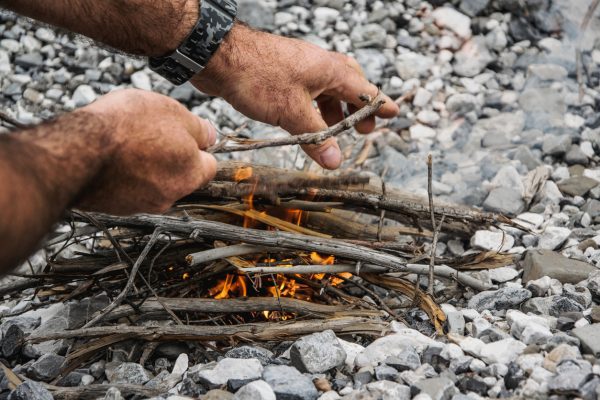
When you’re looking for kindling, find the smallest sticks you can get. Don’t discard larger sticks, however, as you can use a knife to split hardwood kindling and expose the drier wood inside. Plus, you’ll want those larger logs for when you do end up with a roaring blaze.
2. Get Rid of the Bark
It so happens that tree bark is supposed to protect a tree from any dangers, which – you guessed it – includes forest fires. Thus, the bark from most trees actually isn’t terribly flammable and may hinder your ability to get a fire going when it’s wet outside.
The good news, however, is that bark can also help protect the inner wood from moisture and rain. Thus, by peeling off the bark of sticks and kindling, you might find some useable drier wood underneath.
3. Look For Birch Trees
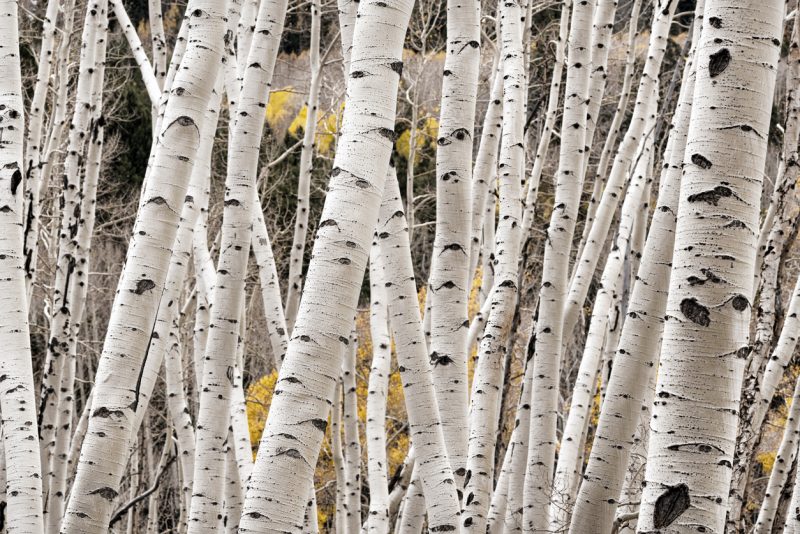
There’s one major exception to tip number two: birch trees. While it’s true that the bark of most trees is not terribly flammable, the bark of the birch tree is actually highly flammable.
Birches are sun-loving trees with curly bark that peels right off of a trunk or branch. This bark is super easy to collect (though please don’t peel it off of live trees, unless you’re in an emergency situation) as it comes off of a branch with minimal force.
Plus, birch bark is hydrophobic (water repelling) and is incredibly oily, so a handful of the stuff usually catches on fire quite quickly, even in the rain. So, if you really need to get a fire going, take a look around – you might just find a downed birch tree with some great kindling, ready for you to use.
4. Don’t Discount The Sticky Stuff
In addition to oily birch bark, one other kind of tree can really come in handy when trying to start a fire in bad weather: a pine tree. This because pine trees are filled with sticky resin, which is highly flammable.
Moreover, their needles repel water, so they tend to stay relatively dry in a downpour. Plus, these needles are dense and fibrous and can create a good amount of heat for a surprisingly long amount of time when they do catch. If you’re using pine needles as your main source of kindling, look for the stickiest needles you can find and loosely pack them to that they can dry out even more as the fire starts to burn.
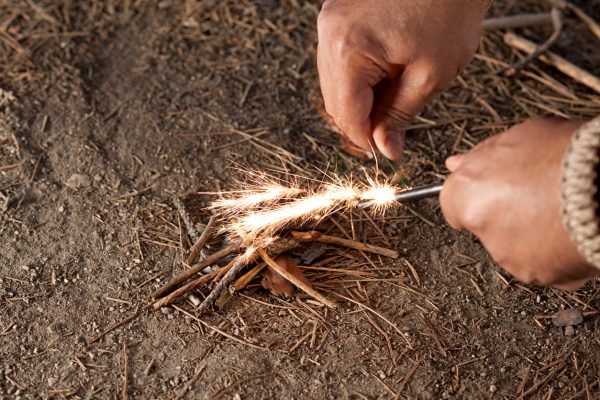
5. Use Fire Starters
Okay, this one isn’t really a tip that will help you in the moment but is more of a suggestion for how you can always be prepared to handle the worst possible situation, should it arise. While most survivalists will tout the importance of having some sort of lighter or match to get a fire started, they seem to gloss over the fact that starting a fire in the woods is pretty darn difficult.
Thus, an easy way to be prepared for this sort of situation is to always carry around a small amount of firestarter when you’re out in the backcountry. It’d definitely be worth putting some in your bug out bag, if you have one, too, and to keep some in any other emergency supply kits you might have. There are many different kinds of fire starters out there, so it’s best to find something small, portable, light, and reliable – just in case.
6. Carry Multiple Different Ways To Start A Fire
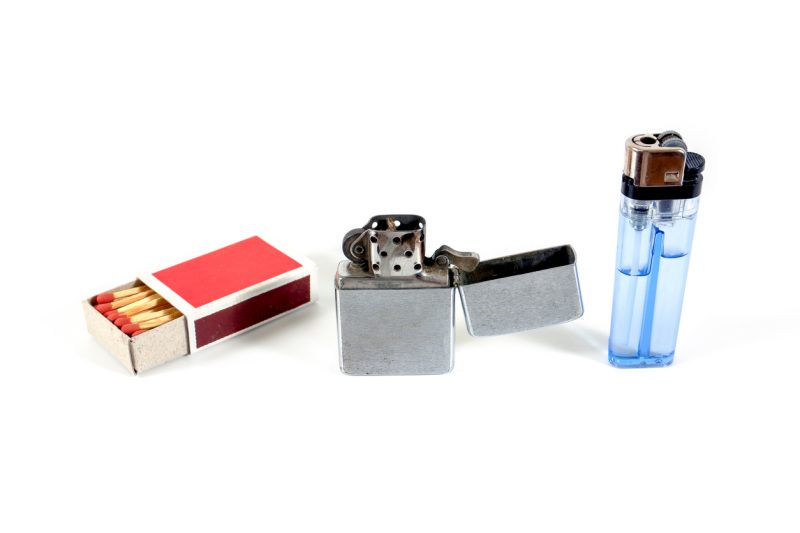
If you’re going to trust your life to a piece of gear, you definitely want to make sure you’ve got a backup option ready to go. Since having a fire in a bad situation could really make a difference between life and death, it seems like a good move to have more than just one lighter in your pocket.
Consider carrying a lighter, some stormproof matches, and a magnesium fire starter. The magnesium fire starter can help add more easily flammable material to your pile and stormproof matches can light even when they’re soaking wet.
7. Learn To Dry Out A Lighter
If you do happen to only have one lighter on hand or all of your lighters got soaked in the rain, you’ll definitely want to know how to dry out your lighters. Contrary to popular belief, it is, indeed, possible to get a lighter to work again, even after it’s taken a little swim in a lake. Thankfully, it’s actually quite easy to do, at least with wheeled lighters:
Find yourself a durable surface, like a downed tree trunk or a rock. Turn the lighter upside down and run it back across this durable surface, making sure the wheel of the lighter is turning as you move it. Eventually, after 20 or 30 seconds, the friction from the lighter wheel should dry out the lighter and voila! You’ve got a working lighter.
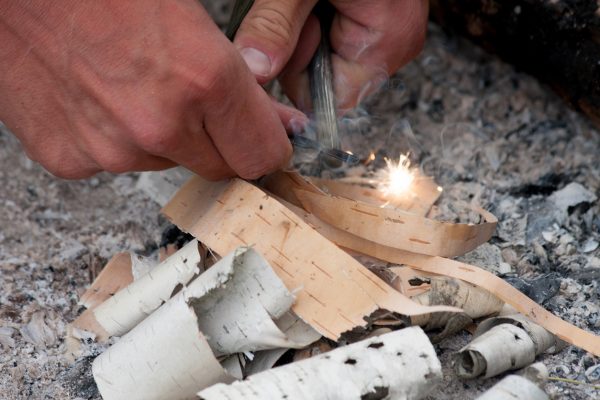
8. Construct A Fire Lay
If you’ve ever tried to make a fire with some friends, you’ve probably had to sit through a small argument over the best way to actually build a fire. A “lay” is a structure crafted out of sticks and other kindling to help a fire ignite and burn efficiently. As you probably know, there are a multitude of ways to build a fire lay, each with their own group of dedicated followers who claim it’s the only way to get a fire started.
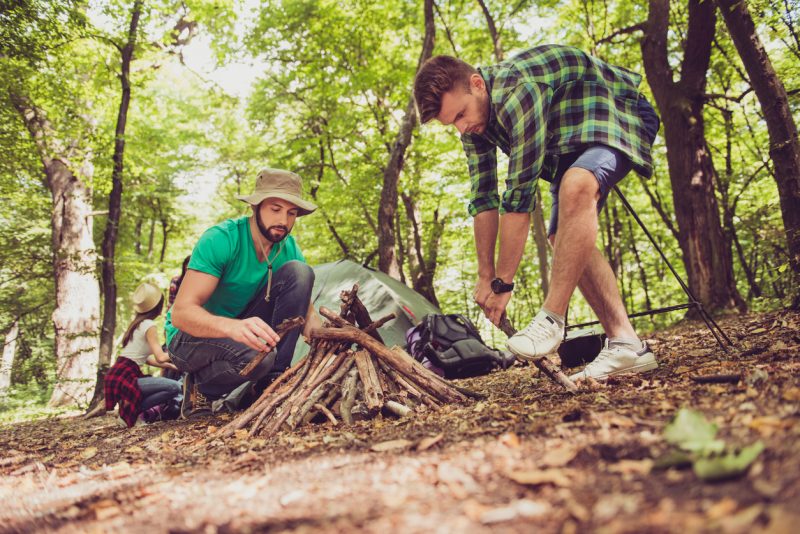
One of the simplest and most popular lays is a pyramid of small twigs with a small pile of kindling in the middle. Light the kindling and the heat from those small flames will eventually catch the small twigs and you’ll have a fire. Regardless of what kind of lay you make, it’s important to ensure that you’ve got plenty of oxygen flow inside the lay, so your fire can keep on burning.
9. Choose The Right Location
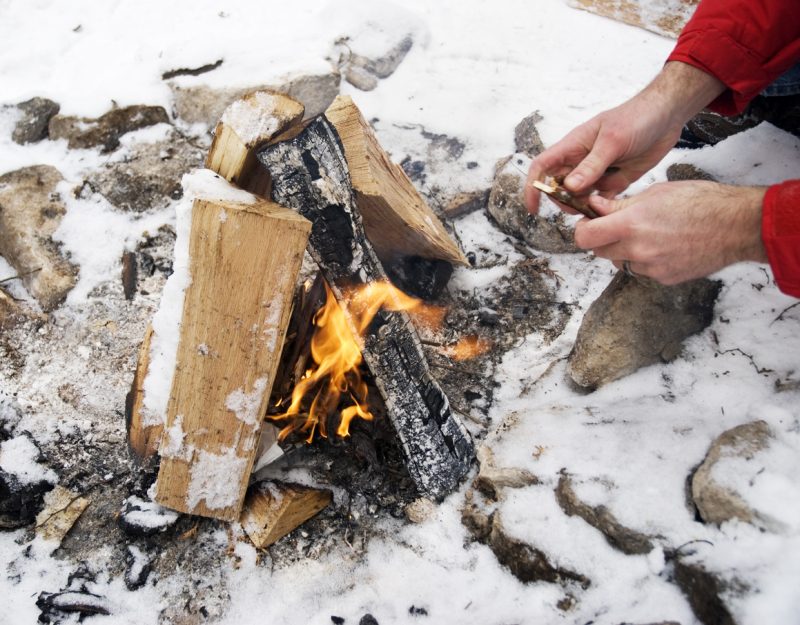
Location, location, location. When you’re building a fire, especially in inclement weather, the right location can be the difference between a sad pile of partially burnt leaves and a warm blaze. If it’s raining, try to find somewhere a bit sheltered from the moisture, like under a large tree – just make sure you’re not going to accidentally set the tree on fire as that certainly won’t help your situation.
In heavy winds, try to nestle yourself behind a large boulder or at the opening of a shallow cave. You can even try to strategically position the people in your group to reduce the effects of the wind as much as possible.
10. Gather Wood Before You Start
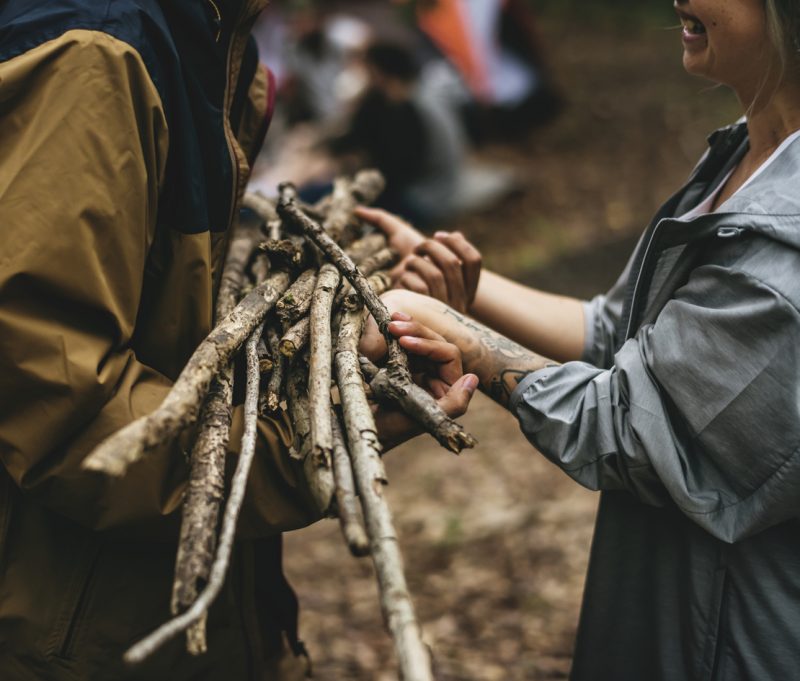
The very last thing you’ll want when you finally get your fire started is to leave its warmth to find more wood. Unfortunately, many people vastly underestimate the amount of wood that they’ll need to keep a fire burning through the night and end up walking away from the flames for long enough for them to go out.
Thus, before you even light your fire, gather way more wood than you think you might need. It’s always better to have leftover wood than to be shivering and wet because you didn’t pick up enough sticks.





